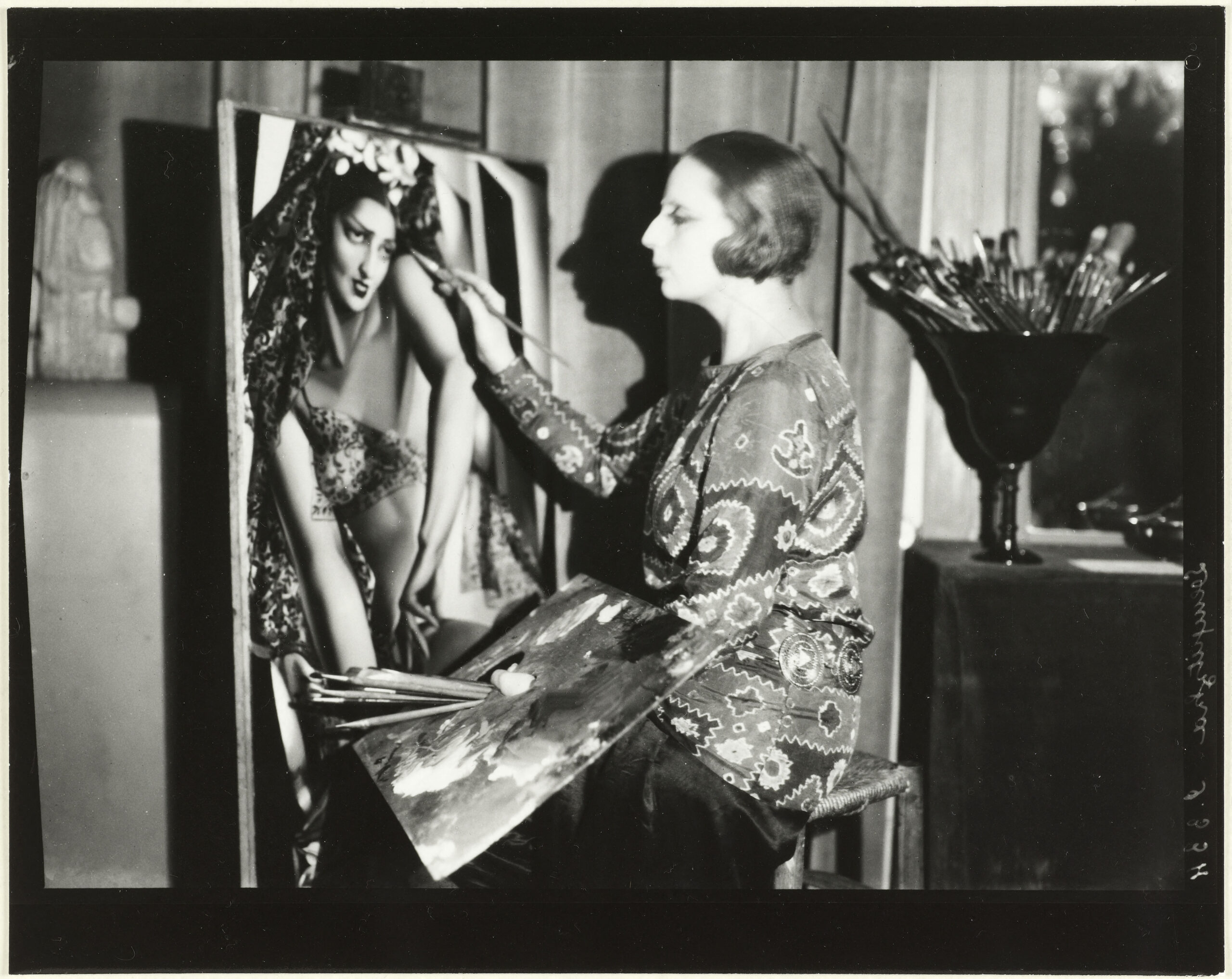The much anticipated exhibition of the work by Tamara de Lempicka comes to The De Young on August 12.
Through her liberal and glamorous lifestyle, artist Tamara de Lempicka (1894-1980) has become synonymous with the carefree spirit and opulence of the 1920s.
Her paintings, combining a classical figural style with the modern energy of the international avant-garde, have cemented Lempicka as one of Art Deco’s defining painters, with an enduring influence on today’s pop culture landscape. Retrospective Tamara de Lempicka—the first exhibition in the United States dedicated to the artist’s full oeuvre—will reveal a new perspective on her life and design practice.
In addition to her celebrated portraits, the more than 120 works on view will also include a number of rarely seen drawings, experimental still lifes from Lempicka’s early Parisian years, melancholic domestic interiors, as well as a selection of Art Deco objects, sculptures and dresses from the Fine Arts Museums’ collection that provide perspective on the artist’s process and historical context. The exhibition is co-curated by Furio Rinaldi and Gioia Mori.
Tamara de Lempicka unfolds chronologically in four major chapters that mark the stages in the artist’s life through her changing identity: “Tamara Rosa Hurwitz” (her newly revealed birth name), “Monsieur Łempitzky,” “Tamara de Lempicka,” and “Baroness Kuffner.” The different sections of the exhibition present the evolution of her artistic style and summarize the most prevalent themes of her work.
The exhibition includes poignant and experimental still lifes from Lempicka’s early Parisian years, figural works inspired by the Russian avant-gardes, the Cubist aesthetic of her teacher, French cubist painter, André Lhote, as well as her appreciation for the work of Neoclassical painters of the 18th century like Jean-Auguste-Dominique Ingres.
Executed with a polished technique, the portraits on display reflect influential figures in Lempicka’s life, including her muses and lovers (poet Ira Perrot, the model Rafaëla and Marquis Guido Sommi Picenardi), portraits of her daughter, Marie-Christine “Kizette”, and her two husbands, Tadeusz Łempicki and Baron Raoul Kuffner de Dioszegh. Distinguished figures from the dazzling European and American cosmopolitan scenes of the 1920s are also featured prominently, as Lempicka was often tapped by the elite during the peak of her success to paint stately, bold and sometimes intimidating portraits.

